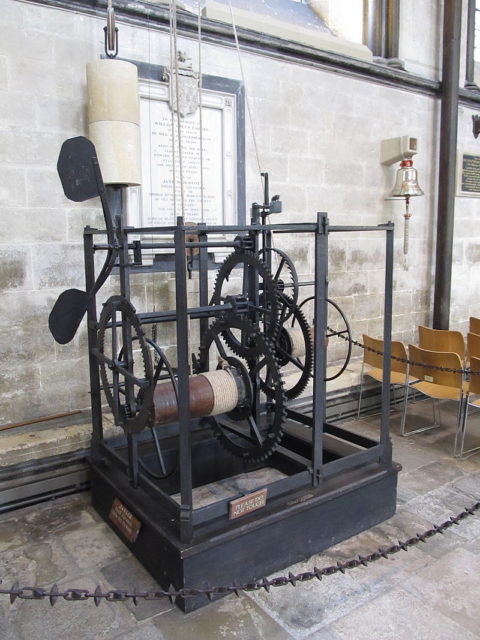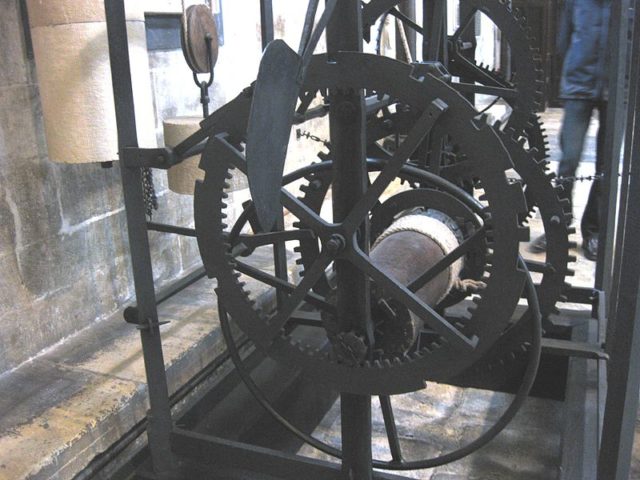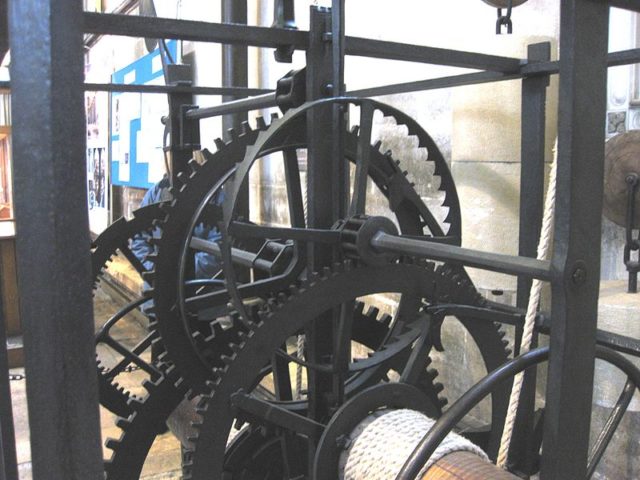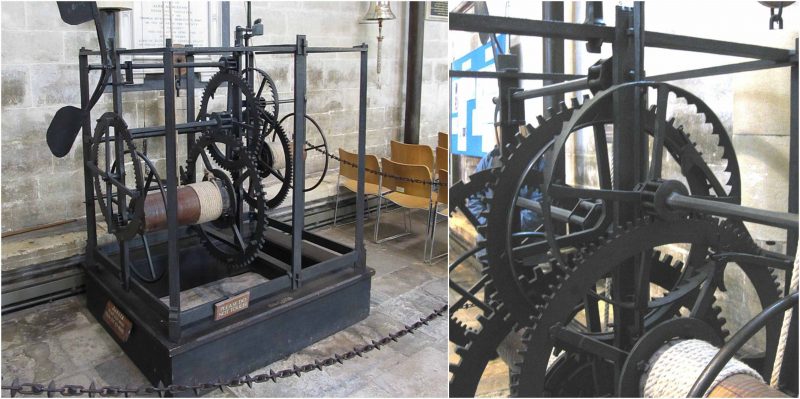It doesn’t have the characteristic dial, but the iconic Salisbury Cathedral clock, with its giant iron-frame, is still capable of making the same ‘hell of a noise’ it has been producing for centuries. It is believed to be dated back to 1386, a claim that would make it the oldest working clock in the world.
However, a similar clock located in the tower cathedral of Beauvais in France also claims to be the oldest and is supposedly dated back to 1305. Italy too has a contender in the clock tower of Chioggia and although the Italian clock hasn’t put forward a date it claims to be amongst the oldest of clock towers.
The West of England has many examples from the 14th and 15th centuries. The effort to determine the origin of Salisbury Cathedral clock was initiated by horological enthusiast T.R. Robinson, which has received support from others. The striking train is believed to contain all the original parts. The great wheel of the going train is also considered to be the one first installed many centuries ago.

Although the Salisbury clock has likely been performing its task since 1386, there is mention of an even earlier clock that struck the hours as far back as 1306. However, historians suggest that this clock from 1306 must have been a precursor of the 1386 clock and was an example of a type clock that used a water driven mechanical system. Historical references for these mechanical water clocks are found from 1280 onwards.
Re-discovered practically abandoned in the cathedral tower in 1928, it had a pendulum which appeared to be a later installation and is thought to have replaced the original verge and foliot. Restoration work on the clock was concluded in 1956 with a new verge and foliot having been installed. Due to the unavailability of the original drawings, it is highly unlikely that the original verge and foliot looked anything like the one in use now. However, most of the parts, including the striking trains, are believed to be from the original design.

The theory is that around the time the clock was built people did not care too much about precision timekeeping. Unlike our modern obsession with seconds and perhaps microseconds, people merely sought precise hourly time. The clock did exactly that by striking on the hour. Because of this, there was no need for a dial.
The first major modification the Salisbury Clock went through came around the end of 17th century. The standard verge and foliot mechanism was replaced by a radical new anchor and pendulum operating system. The pendulum anchor systems usually made clocks much more effective by significantly increasing the accuracy. However, a detailed analysis of the Salisbury Clock carried out by Michael Maltin in the 1990s showed that if the layer of rope on the barrel was kept single, the clock could run to within two minutes a day.

Here is another story from us: The Silver Swan – The 18th Century Clockwork Automaton
The clock was ditched to the side in 1884 after a new clock was installed. It had been transferred to the cathedral’s central tower after the old bell tower, mentioned in the deed of 1386, was demolished in 1790. Following its re-discovery by T.R Robinson, it gained the recognition it rightfully deserved. The discovery of the clock was quite accidental, as Robinson had only climbed up the tower to see the 1884-installed clock when he happened across the much older relic.
